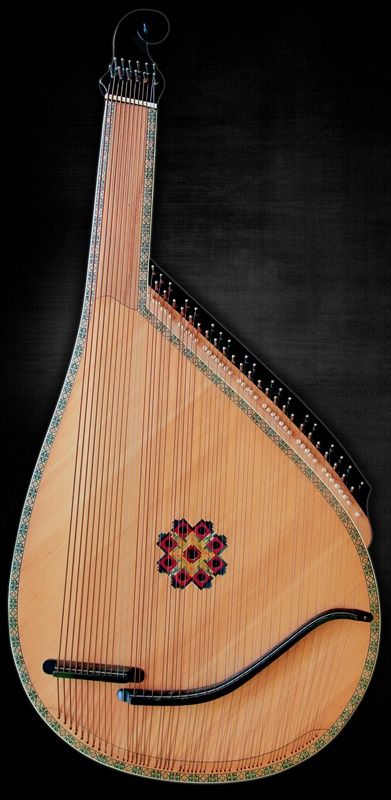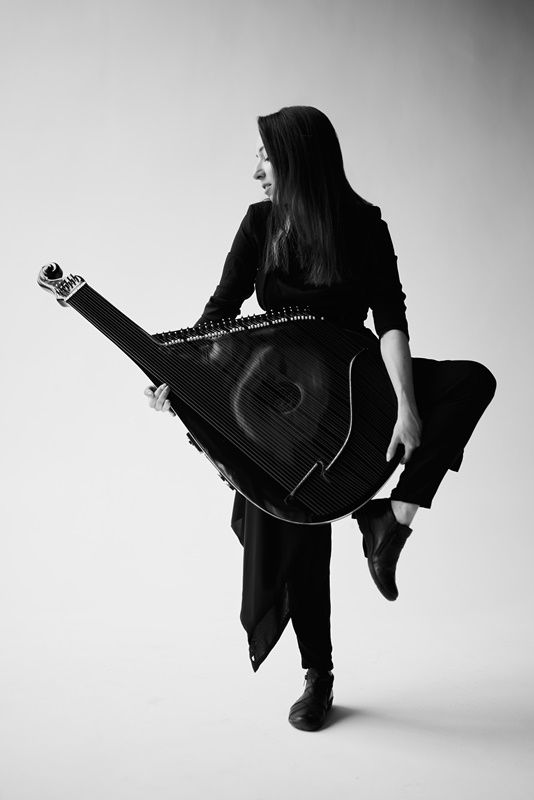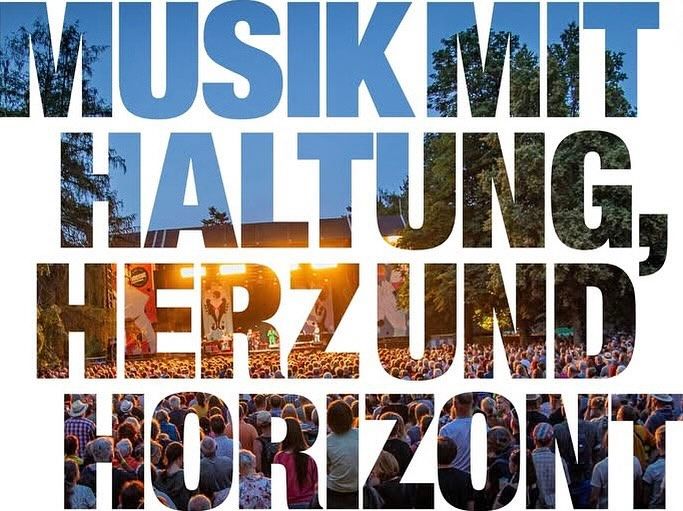When I was seven years old, one day two women came to our music class at school to make an announcement. Back then, in the early Nineties, there were no mobile phones yet, so these were short city numbers that were given to us on pieces of paper. One of them was the bandura teacher’s number, which, as it turned out later, became very important in my life.
Text: Anastasiya Voytyuk
The bandura is a Ukrainian plucked string instrument. Better said, it is a word that denotes an entire phenomenon of Ukrainian music, encompassing instruments, performers, musical directions and concepts, leading to many different forms of the instrument and styles of play. There is still no clear systematisation of this phenomenon and there are many different views, so I want to share with you my atypical experience of being a modern bandura player in Ukraine and tell some important facts about the instrument.
„The word bandura denotes an entire phenomenon of Ukrainian music.“
The bandura family includes such diatonic instruments as the kobza and folk bandura (in Ukrainian starosvitska bandura) as well as multiple models of chromatic modern banduras (those produced in Chernihiv and Lviv, and the Kharkiv type instrument). I personally support the theory that the bandura evolved from the kobza (a small instrument that had 6 to 12 strings and was played like a lute) by adding more and more strings near the neck, so the folk bandura could already have up to 20 to 25 strings. The early versions had gut strings, but in the last century musicians began to use metal strings to make the instruments sound more sonorous, which led to an increase in size and weight. The body of the instrument was most often made of willow, sometimes maple, and the soundboard from spruce or related species.
Today, the most widespread members of the bandura family are the modern chromatic banduras created by Ukrainian masters since the middle of the last century. These will be the instruments you most often encounter nowadays – on the internet, at concerts, maybe even in your friends’ instrument collections. The development and mass production of such instruments began in the 1950s at two factories – the Chernihiv Folk Instruments Factory (now closed) and the Lviv “Trembita” factory, which is still operating. By 1991, more than 30,000 banduras were made at the Chernihiv factory alone. Now there are several bandura manufacturers who are trying to stay on the market. If you would like to buy a bandura, depending on your intentions, you will need to spend anywhere from 200 Euros (the simplest used banduras that normally need restoration) to 8,000 Euros (a professional concert super instrument). Most often, banduras in Ukraine are made as completely acoustic instruments, and only later sound pickups are installed. A modern bandura will weigh 7 to 10 kilograms, it needs a special case, tuning key, strings, and is designed for A440 kHz.
Another reality exists in the community of manufacturers and reconstructors of ancient folk banduras, kobzas and other Ukrainian traditional instruments. This is not a very profitable but very demanding profession. I personally had the pleasure of learning to make a kobza in the workshop of Jurij Fedynskyj in the Poltava region.
The bandura is a symbol of Ukrainian identity on par with the trident, blue-yellow flag, guelder rose and traditional embroidered clothes. At the same time, not all Ukrainians like to listen to the instrument. Paradoxically, at least in Western Ukraine, every second Ukrainian will have a relative, friend or acquaintance who learned to play the bandura or has a bandura at home. In addition, there are many stereotypes about the bandura in Ukraine: that it is boring, uninteresting, that only sad songs are accompanied on it. This is very strange for foreigners, who are usually very enthusiastic about its sound and appearance.
Kyiv Bandura from the Chernihiv Folk Instruments Factory
Photographer: Julian Hayda,Wikimedia CC BY-SA 3.0
The problem in general is the outdated bandura branding – a strange mixture of real folk tradition and the legacy of Soviet “fakelore” – although there have been big changes in the last ten, fifteen years. Back in the day, if you played Metallica on a bandura, you automatically became a “wow” star. Now there are many more interesting projects in different genres. Of course, there are many people who play cover songs, but there are those who create experimental, jazz, rock and pop music. I highly recommend you listen to the following projects: Roman Hrynkiv, KoloYolo, Shpyliasti Kobzari, Georgiy Matviyiv, Maryna Krut, B&B project, Ivan Tkalenko, Julian Kytasty, String Air Synthesis/SAS, Troye Zillia. Bandurists also have begun to participate more often in well-known bands like Onuka or Kozak System.
The bandura looks like an instrument that is quite difficult to learn to play. People are most fascinated by the number of strings (56 to 62 in a modern chromatic bandura). Most people who play the bandura in Ukraine and abroad represent the academic school, which teaches you to play transcriptions of classical tunes and sing in an Italian vocal style. Of course, this is influenced by the education system for bandurists. You can learn to play the bandura in many music schools in Ukraine. The training usually lasted from six to eight years, and recently has been extended to nine. Later, you can get a higher education (bachelor, specialist, master) in higher educational institutions. In recent years, the practice of individual education and bandura teaching in private music schools has begun to develop.
Since professional bandura is so captivating but not accessible to everyone, the idea to digitise it became organic and timely. Several years ago, my colleague Mykhailo Holoborodko suggested creating a bandura online. After https://bandura.ukrzen.in.ua/en was created and then viewed more than eighty million times, we decided to create a mobile application where you can play six Ukrainian instruments. If you are reading this article, we invite you to play bandura too – you can download it for free at https://bandura.app. This is an application that will be interesting to both amateurs and professional musicians and is suitable for both children and adults.
A lot has changed since the war came. In 2014, there were the first impulses to value our culture more. I cannot say that the demand for bandura immediately and sharply increased, but it gradually did. After February 24, 2022, the bandura became especially valuable for Ukrainians, and for foreigners – a visiting card of Ukrainian culture. As a bandura player, I felt that I was gradually taking on the role of a cultural diplomat. At concerts abroad I have the opportunity to directly show what our culture is like, and to demonstrate our unique instrument that really has no analogues in the world. I hope that this will turn into a systematic development and interest in the bandura.
It is also important to mention that many bandura players are now in the armed forces of Ukraine. Very often people who play bandura love Ukraine very much and are ready to give their lives for the country. In different historical times, when Ukraine was occupied, musicians were often persecuted and killed – by the Soviet regime and now by russia – for playing bandura or kobza and singing Ukrainian songs, thus spreading Ukrainian culture.
Today, the bandura is an instrument with deep roots, which is central to the whole concept of protecting our people and heritage and which allows us to speak loudly about Ukraine and its current struggle.
Anastasiya Voytyuk is a singer and plays the Ukrainian national instrument bandura (combines elements of zither and lute). She mainly works in the field of Ukrainian folk music and is leader of the folk fusion band Troye Zillia. With the Lviv Bandur Fest she created the first modern bandura festival in Ukraine. She was involved in the development of the Bandura App, which allows its users to play six Ukrainian musical instruments, and leads the non-governmental organization Unbeaten Path, which works with projects in the fields of culture, education and integration.
www.facebook.com/lvivbandurfest
Anstasiya Voytyuk with Bandura (Photographer: Valentyn Kuzan)







0 Kommentare